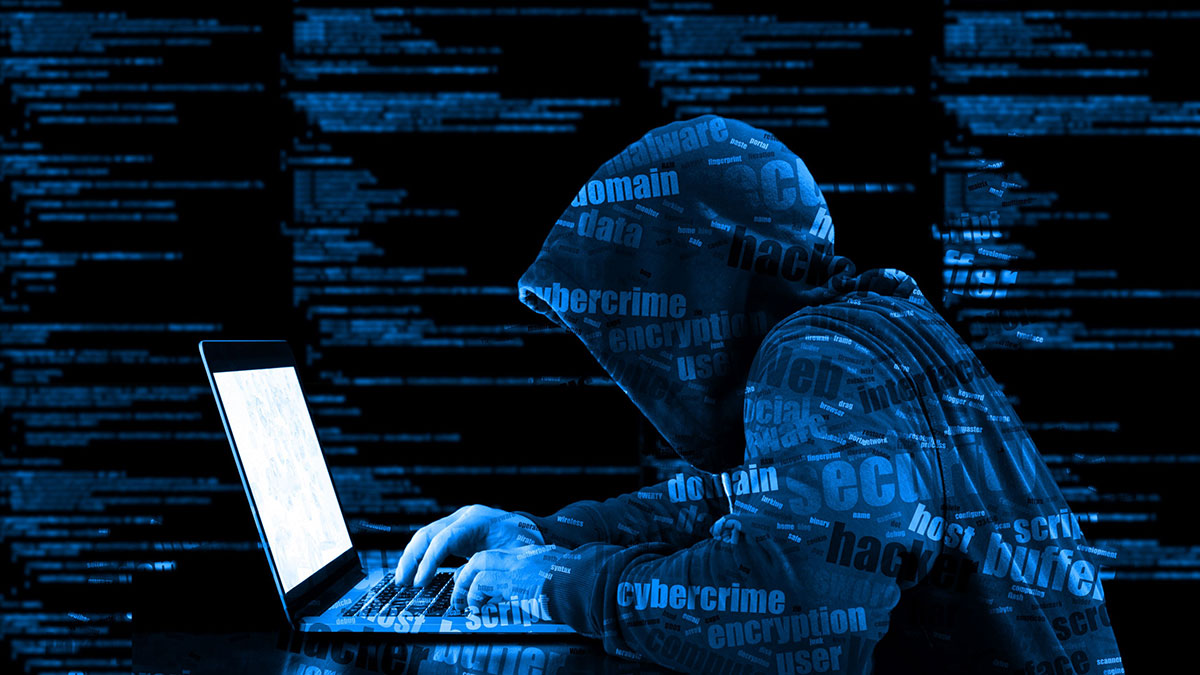การ์ทเนอร์เผย Generative AI, พฤติกรรมพนักงานที่ไม่ปลอดภัย, ความเสี่ยงจากบุคคลที่สาม, ภัยคุกคามที่เพิ่มขึ้นต่อเนื่อง, ช่องว่างการสื่อสารในทีมบริหาร และแนวทางการรักษาความปลอดภัยที่ยึดการยืนยันตัวตนเป็นหลัก ล้วนเป็นปัจจัยที่อยู่เบื้องหลังและคอยขับเคลื่อนแนวโน้มความมั่นคงไซเบอร์ที่สำคัญ ๆ ในปีนี้
มร.ริชาร์ด แอดดิสคอตต์ ผู้อำนวยการอาวุโสฝ่ายวิจัยของการ์ทเนอร์ กล่าวว่า “GenAI กำลังสร้างความกังวลใจให้กับผู้บริหารด้านความปลอดภัยในฐานะที่เป็นอีกหนึ่งความท้าทายที่ต้องจัดการ อย่างไรก็ตามเทคโนโลยีนี้ได้มอบโอกาสการควบคุมขีดความสามารถเพื่อเพิ่มความปลอดภัยในระดับปฏิบัติการ แม้ Gen AI จะเป็นพลังขับเคลื่อนสำคัญอย่างเลี่ยงไม่ได้ ทว่าผู้บริหารยังต้องต่อสู้กับปัจจัยภายนอกอื่น ๆ ที่อยู่นอกเหนือการควบคุมที่ไม่อาจมองข้ามในปีนี้”
ปีนี้เราจะเห็นว่าผู้บริหารด้านความปลอดภัยตอบสนองต่อผลกระทบเหล่านี้ โดยนำแนวทางปฏิบัติ ความสามารถเชิงเทคนิค และการปฏิรูปโครงสร้างมาใช้ภายในโปรแกรมความปลอดภัยของตน โดยมีจุดประสงค์เพื่อปรับปรุงความยืดหยุ่นขององค์กรและเพิ่มประสิทธิภาพฟังก์ชันความปลอดภัยทางไซเบอร์
6 เทรนด์ต่อไปนี้ส่งผลกระทบเป็นวงกว้างในหลากหลายด้าน:
เทรนด์ที่ 1: Generative AI – ระยะสั้นยังกังขา แต่ระยะยาวคือความหวัง
ผู้บริหารจำเป็นต้องเตรียมพร้อมรับมือกับวิวัฒนาการอย่างรวดเร็วของ GenAI เนื่องจากแอปพลิเคชันโมเดลภาษาขนาดใหญ่ (LLM) เช่น ChatGPT และ Gemini นั้นยังเป็นเพียงจุดเริ่มต้นของการดิสรัปต์เท่านั้น ขณะเดียวกันผู้บริหารต่างมีเป้าหมายที่จะเพิ่มประสิทธิภาพการทำงาน ลดช่องว่างด้านทักษะ และมอบประโยชน์ใหม่อื่น ๆ สำหรับความมั่นคงทางไซเบอร์ การ์ทเนอร์แนะนำว่าการใช้ GenAI นั้นควรเกิดขึ้นผ่านความร่วมมือเชิงรุกกับผู้มีส่วนได้ส่วนเสียทางธุรกิจ เพื่อสนับสนุนการใช้ Disruptive Technology นี้อย่างมีจริยธรรมและตั้งอยู่บนพื้นฐานความปลอดภัย
“สิ่งสำคัญคือเราต้องเข้าใจว่าตอนนี้วิวัฒนาการ GenAI ยังอยู่ในขั้นเริ่มต้นเท่านั้น จากการสาธิตหลากหลายที่เราได้เห็นในด้านการดำเนินการความปลอดภัยและในแอปพลิเคชันความปลอดภัยที่เผยให้เห็นคำมั่นสัญญาที่แท้จริง ทำให้ในระยะยาวยังมีความหวังรออยู่สำหรับเทคโนโลยีนี้ แต่ในเวลานี้มีแนวโน้มที่จะเจอกับความอ่อนเปลี้ยของผลผลิตมากกว่าการเติบโตในระดับเลขสองหลัก หลายสิ่งจะได้รับการปรับปรุงยิ่งขึ้น ดังนั้นต้องสนับสนุนการทดลองและจัดการความคาดหวัง โดยเฉพาะภายนอกทีมงานด้านความปลอดภัย”
เทรนด์ 2: มาตรวัดที่ขับเคลื่อนด้วยผลลัพธ์ความมั่นคงไซเบอร์: เชื่อมช่องว่างการสื่อสารในทีมบริหาร
ความถี่และผลกระทบเชิงลบของเหตุความมั่นคงทางไซเบอร์ที่กระทบต่อองค์กรยังคงเพิ่มขึ้นต่อเนื่อง ซึ่งบ่อนทำลายความเชื่อมั่นของกลยุทธ์ความมั่นคงทางไซเบอร์ของคณะกรรมการและทีมบริหาร โดยมาตรวัดที่ขับเคลื่อนด้วยผลลัพธ์ หรือ Outcome-Driven Metrics (ODMs) ได้ถูกนำมาใช้มากขึ้นเพื่อให้ผู้มีส่วนได้ส่วนเสียสามารถขีดเส้นแบ่งการลงทุนด้านความมั่นคงไซเบอร์และมอบระดับการป้องกันที่ถูกสร้างขึ้น
การ์ทเนอร์ ระบุว่า ODMs เป็นศูนย์กลางในการสร้างกลยุทธ์การลงทุนด้านความมั่นคงทางไซเบอร์ที่สามารถป้องกันได้ สะท้อนถึงระดับการป้องกันที่ผสมผสานคุณสมบัติที่มีประสิทธิภาพสูง และสามารถสื่อสารในภาษาที่เข้าใจได้ง่าย ๆ ที่ไม่ใช่ฝ่ายไอทีก็สามารถอธิบายได้ สิ่งนี้เป็นการแสดงออกถึงความเสี่ยงที่น่าเชื่อถือและป้องกันได้ ซึ่งสนับสนุนการลงทุนเพื่อเปลี่ยนแปลงระดับการป้องกันโดยตรง
เทรนด์ที่ 3: โปรแกรมวิเคราะห์พฤติกรรมและวัฒนธรรมความปลอดภัยกำลังได้รับความสนใจเพิ่มขึ้น เพื่อลดความเสี่ยงที่เกิดจากมนุษย์
ผู้บริหารด้านความปลอดภัยตระหนักดีว่าการเปลี่ยนโฟกัสจากการเพิ่มความตระหนักรู้ไปสู่การส่งเสริมการเปลี่ยนแปลงพฤติกรรมจะช่วยลดความเสี่ยงด้านความปลอดภัยทางไซเบอร์ ในปี 2570 ครึ่งนึง (50%) ของ CISO ในองค์กรขนาดใหญ่จะนำแนวทางการออกแบบการรักษาความปลอดภัยที่คำนึงถึงผู้ใช้เป็นหลักมาใช้เพื่อลดความขัดแย้งที่เกิดจากความมั่นคงไซเบอร์ และเพิ่มการควบคุมมาใช้ให้เกิดประโยชน์สูงสุด โดยโปรแกรมวิเคราะห์พฤติกรรมและวัฒนธรรมด้านความปลอดภัย หรือ Security Behavior and Culture Programs (SBCPs) สามารถใช้วิเคราะห์และสรุปแนวทางทั่วทั้งองค์กรเพื่อลดเหตุการณ์ด้านความปลอดภัยทางไซเบอร์ที่เกี่ยวข้องกับพฤติกรรมพนักงาน
“องค์กรธุรกิจที่ใช้ SBCPs จะได้รับประสบการณ์การยอมรับการควบคุมความปลอดภัยของพนักงานดีขึ้น ลดพฤติกรรมที่ไม่ปลอดภัย เพิ่มความรวดเร็วและความคล่องตัว และนำไปสู่การใช้ทรัพยากรความมั่นคงทางไซเบอร์อย่างมีประสิทธิภาพมากขึ้น เนื่องจากพนักงานมีความสามารถตัดสินใจเกี่ยวกับความเสี่ยงทางไซเบอร์อย่างอิสระ” แอดดิสคอตต์ กล่าวเพิ่ม
เทรนด์ที่ 4: การจัดการความเสี่ยงของบุคคลที่สามที่ขับเคลื่อนด้วยความยืดหยุ่นและการใช้ทรัพยากรอย่างมีประสิทธิภาพ
เหตุการณ์ความมั่นคงไซเบอร์จากบุคคลที่สามเป็นสิ่งที่หลีกเลี่ยงไม่ได้ และกำลังสร้างแรงกดดันให้ผู้บริหารหันมาให้ความสำคัญกับการลงทุนที่มีความยืดหยุ่นมากขึ้น และเลิกใช้แนวปฏิบัติสำหรับการตรวจสอบโดยละเอียดในด้านการลงทุน หรือ Front-Loaded Due Diligence การ์ทเนอร์แนะนำให้ผู้บริหารปรับปรุงการบริหารความเสี่ยงในบริการของบุคคลที่สาม และสร้างความสัมพันธ์ที่เป็นประโยชน์ร่วมกันกับพันธมิตรภายนอก เพื่อให้มั่นใจว่าทรัพย์สินที่มีค่าที่สุดของพวกเขาได้รับการปกป้องอย่างต่อเนื่อง
“เริ่มด้วยการเสริมความแข็งแกร่งให้กับแผนฉุกเฉินสำหรับการมีส่วนร่วมของบุคคลที่สามที่ก่อให้เกิดความเสี่ยงด้านความมั่นคงทางไซเบอร์สูงสุด หรือสร้าง Playbooks สำหรับเหตุการณ์เฉพาะบุคคลที่สามพร้อมดำเนินการฝึกซ้อม และกำหนดกลยุทธ์ชัดเจนที่เกี่ยวข้องกับการเพิกถอนสิทธิ์ในการเข้าถึงและทำลายข้อมูลอย่างทันที” แอดดิสคอตต์ กล่าวเพิ่ม
เทรนด์ที่ 5: ใช้โปรแกรมจัดการความเสี่ยงจากภัยคุกคามต่อเนื่อง
Continuous Threat Exposure Management (CTEM) เป็นแนวทางปฏิบัติอย่างมีระบบที่องค์กรธุรกิจสามารถใช้ประเมินการเข้าถึง เปิดเผย และใช้ประโยชน์จากสินทรัพย์ดิจิทัลและสินทรัพย์ทางกายภาพอย่างต่อเนื่อง การจัดขอบเขตการประเมินและการแก้ไขให้สอดคล้องกับภัยคุกคามหรือโครงการทางธุรกิจในแบบเฉพาะ แทนที่จะเป็นองค์ประกอบโครงสร้างพื้นฐาน ซึ่งเน้นย้ำถึงช่องโหว่และภัยคุกคามที่ไม่สามารถแก้ไขได้
ภายในปี 2569 การ์ทเนอร์คาดการณ์ว่าองค์กรที่ให้ความสำคัญกับการลงทุนด้านความปลอดภัยตามพื้นฐานของโปรแกรม CTEM จะพบการละเมิดลดลงถึงสองในสาม โดยผู้บริหารจะต้องตรวจสอบสภาพแวดล้อมดิจิทัลแบบไฮบริดอย่างต่อเนื่อง เพื่อสามารถระบุตัวตนได้ตั้งแต่เนิ่น ๆ และจัดลำดับความสำคัญของช่องโหว่ได้อย่างเหมาะสมที่สุด ช่วยรักษาพื้นผิวการโจมตีให้มีความแข็งแกร่งยิ่งขึ้น
เทรนด์ที่ 6: การขยายบทบาทการจัดการการเข้าถึงและระบุตัวตน (Identity & Access Management หรือ IAM) เพื่อปรับปรุงผลลัพธ์ความมั่นคงทางไซเบอร์
เมื่อองค์กรหันมาใช้แนวทางการรักษาความปลอดภัยที่ให้ความสำคัญกับข้อมูลระบุตัวตนเป็นหลักมากขึ้น การมุ่งเน้นจะเปลี่ยนจากการรักษาความปลอดภัยเครือข่ายและการควบคุมแบบดั้งเดิมอื่น ๆ ไปสู่ Identity & Access Management (IAM) ทำให้มีความสำคัญต่อความมั่นคงทางไซเบอร์และผลลัพธ์ทางธุรกิจ ขณะที่การ์ทเนอร์เห็นบทบาทที่เพิ่มขึ้นสำหรับ IAM ในโปรแกรมความปลอดภัย แนวทางปฏิบัติจะต้องพัฒนาเพื่อมุ่งเน้นไปที่ความปลอดภัยขั้นพื้นฐานและเสริมความแข็งแกร่งให้กับระบบเพื่อปรับปรุงความยืดหยุ่น
การ์ทเนอร์แนะนำให้ผู้บริหารมุ่งเน้นไปที่การเสริมสร้างความแข็งแกร่งและใช้ประโยชน์จากโครงสร้างของข้อมูลระบุตัวตน และใช้ประโยชน์ของการตรวจจับภัยคุกคามรวมถึงการตอบสนอง เพื่อให้แน่ใจว่าความสามารถของ IAM อยู่ในจุดที่ดีที่สุด เพื่อรับมือกับขอบเขตการป้องกันของโปรแกรมความปลอดภัยโดยรวม
